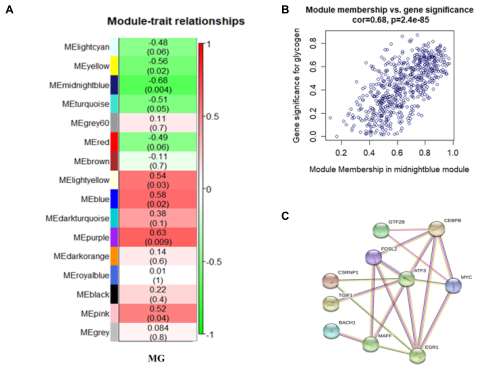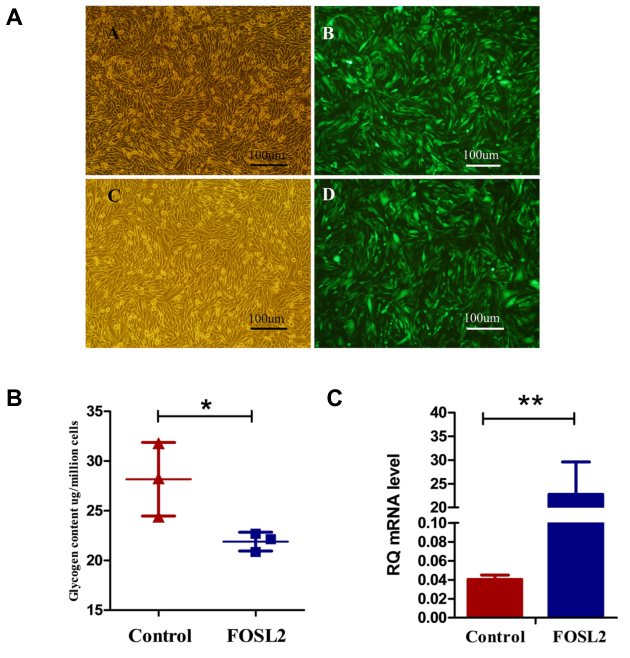Muscle glycogen (MG) is an important intermediate in the process of glucose metabolism, which can maintain the stability of blood glucose and regulate the balance of glucose metabolism. MG not only participates in maintaining the normal physiological activities of animals, but also affects the homeostasis, growth performance and meat quality of livestock and poultry after slaughter. However, the key genes regulating MG metabolism in poultry have not been determined.
Recently, Xiaojing Liu,etc. (Chinese Academy of Agricultural Sciences Pasturage Institute) published "FOSL2 Is Involved in the Regulation of Glycogen Content in Chicken Breast Muscle Tissue" in Frontiers in Physiology (2020 IF:4.566), which confirmed the key role of FOSL2 in regulating glycogen content in chicken breast muscle tissue. This discovery is helpful to understand the metabolic regulation mechanism of muscle glycogen in chickens, and provides a new idea for the production of high-quality broilers and the formulation of comprehensive nutritional control strategies.

In previous studies, researchers found that FOSL2 is a candidate gene related to chicken muscle glycogen (MG) content, but the role of FOSL2 in regulating MG content is still unclear. Differential gene (DEGs) expression analysis and weighted gene coexpression network analysis (WGCNA) were carried out in the breast muscle samples of yellow chickens in high MG group (HMG) and low MG group (LMG). It was found that except FOSL2, there were some genes related to MG metabolic pathway, such as PRKAG3, CEBPB, FOXO1, AMPK and PIK3CB; In addition, it was also found that FOSL2, CEBPB, MAP3K14 and other classical glycogen metabolism related genes were related to MG content in the same co-expression module by the WGCNA. The expression of FOSL2 was negatively correlated with MG content, and there was a possibility of interaction between FOSL2 and CEBPB.

The researchers further studied the effect of FOSL2 lentivirus overexpression (constructed by Ubigene) on glycogen content in vitro. The results showed that FOSL2 reduced the glycogen content in the chicken fibroblast DF1 cell line, which was consistent with the analysis results of transcriptome and WGCNA data. Ubigene provides plasmids construction and Virus Packaging services for customers globally, as low as $559.

The research results show that the key role of FOSL2 in regulating MG content in chicken cell lines. FOSL2 may negatively regulate MG content by regulating its downstream gene CEBPB, which is not affected by variety and gender. And it provides a new understanding for the study of MG metabolic regulation.
Consequently, the main idea of this article is to find the candidate gene first, and then overexpress the target gene to study the regulation mechanism and gene function. Obviously, different idea of research needs to modify candidate genes in different ways.
Ubigene provides gene-editing services for customers all over the world. Ubigene not only provides plasmids construction and Virus Packaging services, but also offers custom stable cell line generation services to meet the different research needs of customers! For information, please inquire >>
Reference
Liu X, Liu L, Wang J, Cui H, Zhao G, Wen J. FOSL2 Is Involved in the Regulation of Glycogen Content in Chicken Breast Muscle Tissue. Front Physiol. 2021 Jul 6;12:682441. doi: 10.3389/fphys.2021.682441. PMID: 34295261; PMCID: PMC8290175.


No comments:
Post a Comment